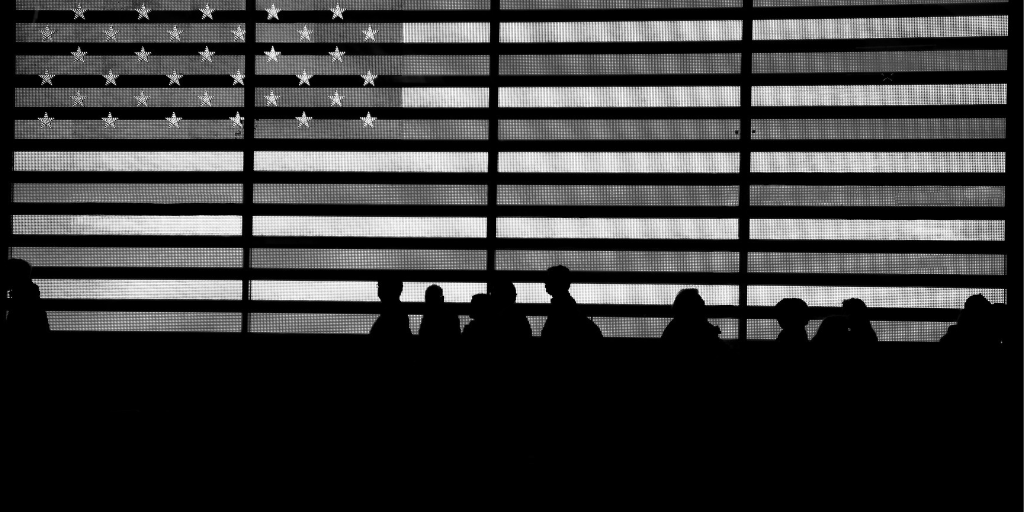Nearly two years after President Lincoln issued the Emancipation Proclamation, General Gordon Granger and Union soldiers traveled to Galveston, Texas, to bring the news that the Civil War had ended, and all enslaved people were free. While the 13th Amendment formally abolished slavery in the United States in January of 1865, June 19th marked the date that the news of freedom arrived. This date soon became known as Juneteenth—a holiday to memorialize Black people’s emancipation from American chattel slavery. The first celebration of Juneteenth took place in 1866, and since then, the holiday has grown to signify more than the end of slavery.
Juneteenth asks us to consider the promises of freedom not yet fully realized in the United States. In the 1890s, Juneteenth celebrations included questions about the “broader implications for citizenship,” and Black people strategized about how to secure voting rights and larger participation in the American political process. In 1968, Dr. Martin Luther King Jr.’s Poor People’s March—a demonstration about economic justice—held a Juneteenth celebration as a way to address poverty and freedom by examining the past. At the holiday’s core, Juneteenth has always recognized that freedom for Black people has been delayed by the continuing systemic and institutional oppression of Black people in America.
Anti-Black racist ideas, attitudes, behaviors, and beliefs along with the modern social and political institutions founded and upheld by White supremacy, keep freedom delayed for Black people in America. Our modern prison system demonstrates the violence that delayed freedom inflicts, particularly upon Black and Latinx children, families, and communities. Filmmaker Ava Duvernay’s When They See Us provides an intimate look into how the modern prison system uses anti-Black racist ideas and power to continually deny freedom. When They See Us tells the story of Kevin Richardson, Raymond Santana, Antron McCray, Yusef Salaam, and Korey Wise, the Exonerated Five whose lives changed forever on a spring evening in 1989. The boys, aged between 14 and 16 at the time, happened to be in Central Park on the same night that a woman was brutally assaulted. The four-part mini-series vividly shows how the justice system—police officers, prosecutors, a judge, and a jury—worked in concert to railroad them for crimes they did not commit. Because of their race, the media helped to create a false narrative about the children—regularly describing them as animals—that made their criminalization and descent into America’s prison system all too easy. Once in prison for a crime that they denied (there was no DNA evidence to back up prosecutor’s claims) the boys were isolated from their families, faced extreme violence, and had their childhoods ripped away from them. The laws allowing youth to be sentenced as adults placed Korey Wise—a 16-year-old boy—in one of the country’s most notoriously violent prisons, Rikers Island, and into solitary confinement. These laws from the 1980s still exist today, and research also indicates that prosecuting attorneys are far more likely to try Black youth as adults than their White counterparts.
The most tragic part of the story of the Exonerated Five is that it is a reiteration of our past. During slavery, enslaved people had to abide by slave codes—dehumanizing laws that, among other things, prohibited an enslaved person from testifying against a White person in court. As CSSP’s Elisa Minoff conveys in Entangled Roots, while formerly enslaved people attempted to claim greater freedom, “the nation turned to the criminal justice system to limit those freedoms.” Even after the abolishment of slavery, laws to convict and hurt Black people maintained themselves. Convict leasing enabled the state to convict Black people of minor crimes, regardless of guilt, forcing them into unpaid labor in inhumane conditions. During the Jim Crow era, the state habitually acquitted White people, who lynched Black Americans for crimes that were often not crimes at all. Today, the state incarcerates Black people at five times the rate of White people. Black children, as young as 10 years old, are more likely to be seen as adults and less innocent than White children. While the population of youth in detention facilities has declined in recent years, the over-incarceration of Black youth persists.
These harsher punishments that the prison system delivers Black youth are not a result of Black youth’s increased participation in crime. Continued racial disparities in the criminal justice system are a result of targeted systemic and institutional oppression that has continued long after the formal abolition of slavery. The anti-Black ideas that shaped slavery have supported the development of contemporary systems that still view blackness as criminal. Analysis of federal data indicates that despite engaging in behavior at the same rates as White youth, Black youth are disproportionately punished, and Black people make up of the majority of wrongfully convicted defendants who are later exonerated for their crimes.
It is fitting that Juneteenth is the holiday held before the nation celebrates the Fourth of July. The two holidays, less than a month apart, ask us to think about what freedom means, who has it, and how institutions, laws, and policies continue to deny true freedom to certain individuals. On July 4, 1776, the inception of America’s recognized Independence Day, Black people still remained in bondage. Almost 100 years later, enslaved Black Americans were freed, leading to the creation of the Juneteenth holiday. And as people have continued to celebrate emancipation, Juneteenth serves as a reminder of how freedom from chattel slavery was delayed by unjust systems and institutions. On this Fourth of July, it is important to reflect on the nation’s history with freedom and move towards disrupting the systems that have and continue to harm children, youth, and families today.
